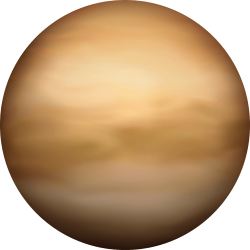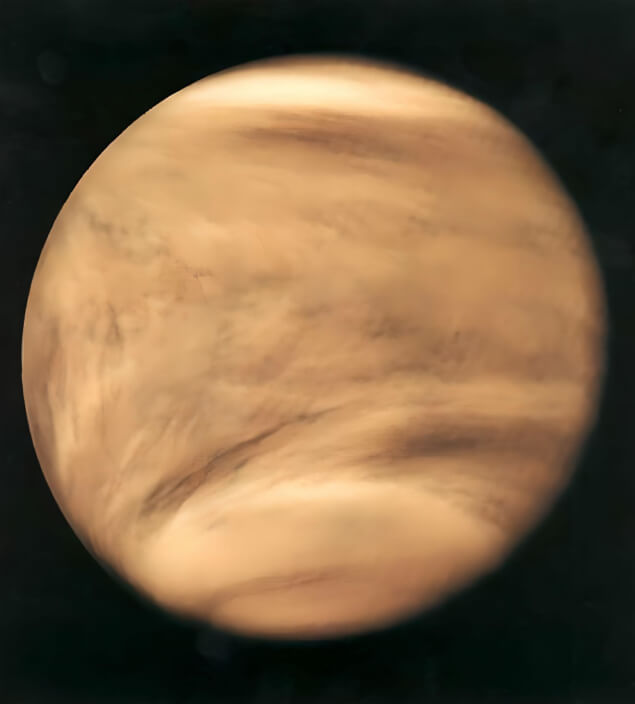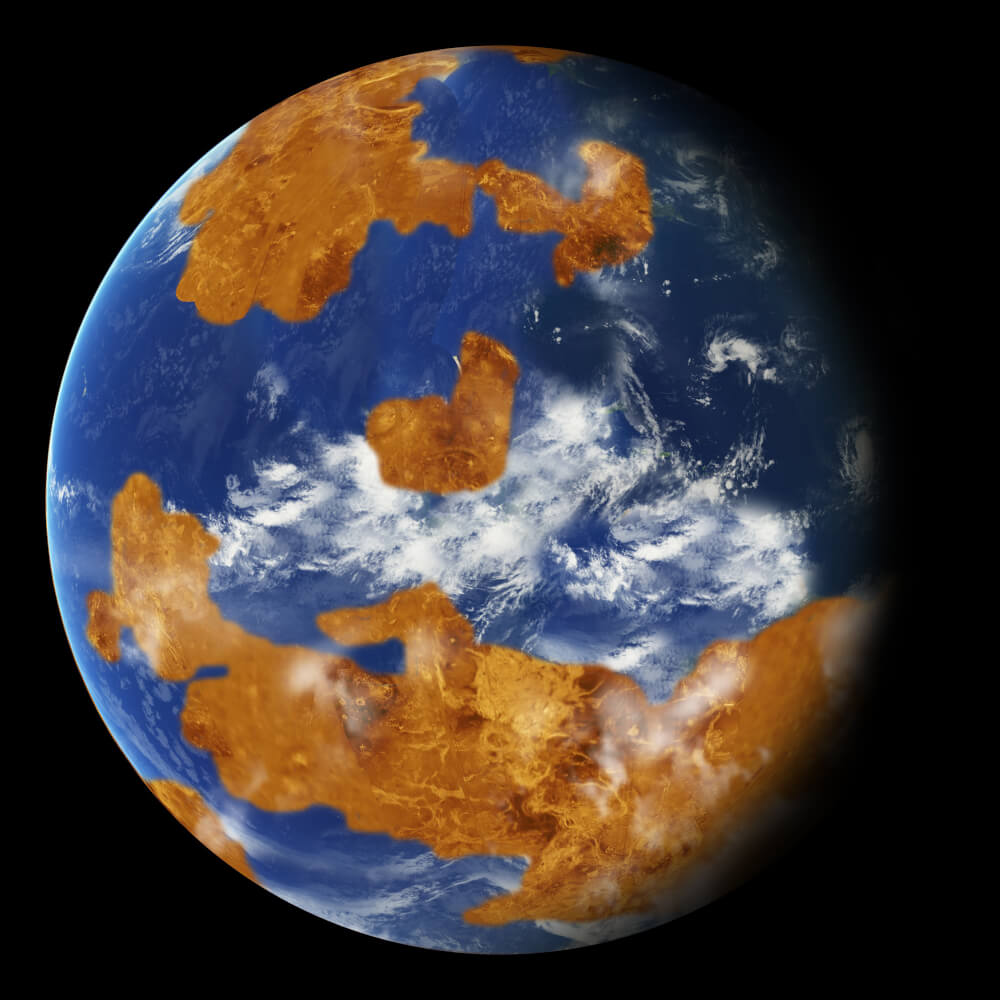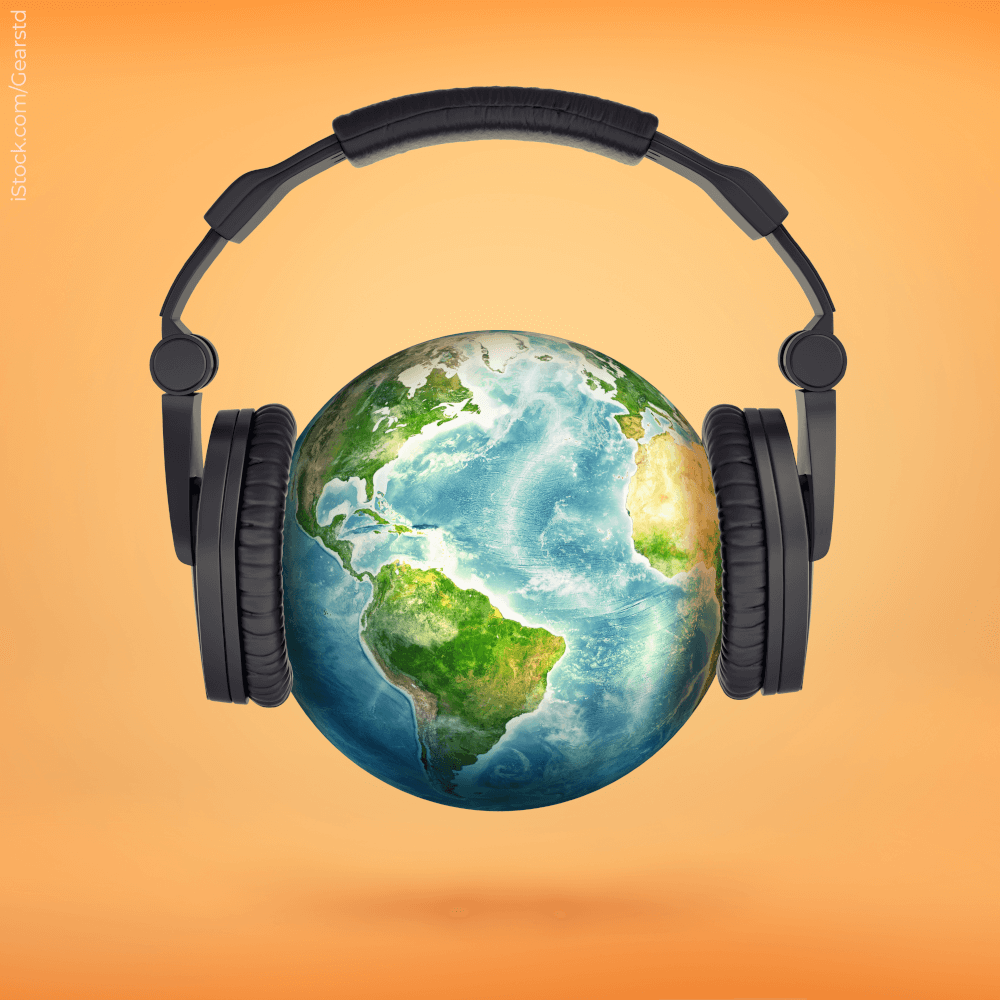Venus
Picture credits


Venus and Earth are very similar in size and internal structure, but Venus has an extremely hot surface and a dense, toxic atmosphere. The distance between the Sun and Venus is about three quarters of the distance between the Sun and Earth, which is why a year on Venus lasts only 225 Earth days. On the other hand, a Venusian day is 20 Earth days longer than a Venusian year!
Venus also rotates differently from all the other planets in the Solar System (with the exception of Uranus, which rotates quite differently again). As a result, the sun rises in the west and sets in the east.

Venus has very thick cloud layers that are toxic to humans: A 20 km thick cloud cover surrounds the planet at a height of 60 to 80 km. Many space probes have detected lightning in these clouds, the origin of which is not yet understood. Below the cloud layers, the wind speed is 60 times faster than the rotation of Venus itself, a phenomenon called super rotation. Wind speed decreases the further one gets towards the surface. On the surface itself, it’s about walking speed.
Despite the generally hostile atmosphere on Venus, conditions at an altitude of 50 to 65 km above the surface are similar to those on Earth. Here, at least, the pressure and temperature are the same as on the earth’s surface. This 15 km thick region in the cloud layers of Venus is the most Earth-like region in the Solar System, even more Earth-like than the surface of Mars!

Venus has a very dense atmosphere of almost pure carbon dioxide (CO2), which is almost 50 times denser than Earth’s atmosphere. As a result, the pressure on the surface of Venus is as high as the water pressure at a depth of 900 m! At these pressures, the atmosphere behaves more like a hot, very dense fog than a gas. The high CO2 content leads to an extreme greenhouse effect: the rocky surface of Venus is over 450 degrees Celsius hot! Without the greenhouse effect it would probably be “only” about 60 degrees!
Interestingly, when Earth and Venus formed about 4.5 billion years ago, they had very similar atmospheres. To this day, we still do not understand why and how the two planets could develop so differently.

Venus is about a quarter closer to the Sun than Earth is. That’s why we always see Venus (and also Mercury) close to the Sun. In addition, Venus is the second brightest object in the night sky (after the moon), which is why it is also called the morning or evening star. The reason for its high brightness is the highly reflective cloud cover of tiny sulphuric acid droplets.

The Magellan space probe has discovered that the surface of Venus is only about 500 million years old and thus relatively young. But how is that possible when the planets of the Solar System formed 4.5 billion years ago? The current explanation is that Venus was probably very Earth-like until about 700 million years ago: it may have had surface water, a life-friendly atmosphere and perhaps even some form of life. But then the surface changed completely and Venus became an unlikely place for life as we know it. Deeper layers of rock were pushed over the previous surface, a process that took about 200 million years. In the process, a lot of CO2 was released from the deeper layers, which triggered the greenhouse effect we see on Venus today. Earth has about the same CO2 content as Venus, but much of it is bound up in rocks and oceans.

Audio guide
(available soon)
PhD students from the Institute of Physics at the University of Rostock give exciting insights into their research and explain the universe.
Quiz
Venus was the first planet to be explored by a spacecraft. In 1975, the Venera 9 probe sent the first images of the surface of another planet. How high is the visibility there with all the dense clouds and atmosphere?
